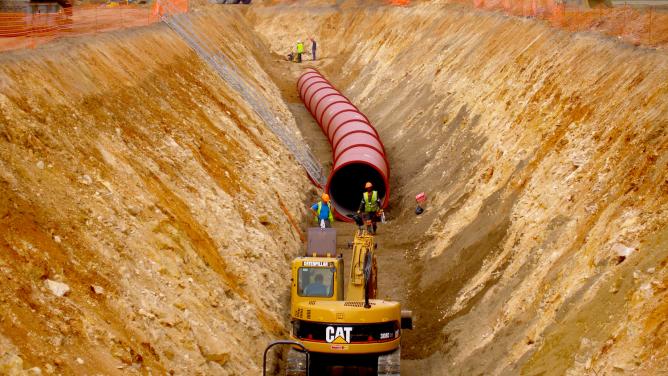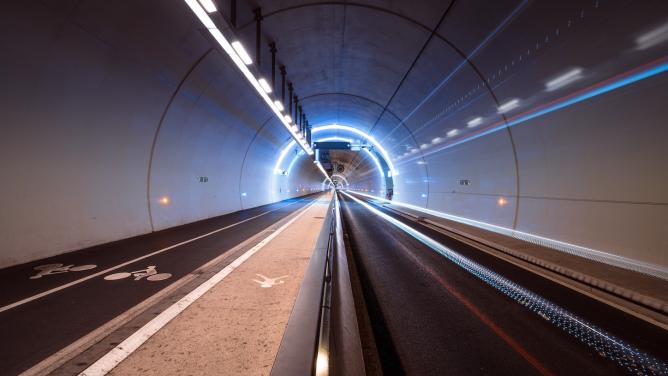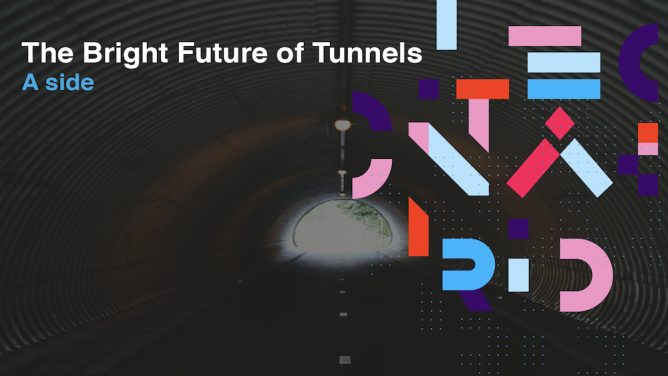Find our complete analysis on the A Side of the The Bright Future of Tunnels newsletter.
Covid – exiting the tunnel
The world of tunnels hasn’t been spared by the Covid-19 pandemic. Construction sites have either slowed down or come to a halt, and have been forced to implement social distancing protocols. This is particularly the case for the Grand Paris Express project – the biggest construction site in Europe right now. Most importantly, the sector must now face up to a structural threat, as travelers are turning their backs on public transport, and thus draining a part of operating revenues. Forced by a crisis of collapsing demand, the debate on financing mobility must be brought up to date and invent solutions for the future. The post-Covid revival plan seems like an unexpected opportunity to boost certain construction projects. As is the case for railways and infrastructure which can benefit from the national recovery plan, but also disruptive innovation such as Hyperloop, which present themselves as a low-carbon alternative to air travel.
The futures of mobility after COVID-19 (Deloitte)
Crise sanitaire : des menaces planent sur le Grand Paris et les JO de Paris 2024 (Les Échos, in French)
Plan France relance : les travaux publics sont aussi servis (Batiactu, in French)
How Coronavirus Could Accelerate a European Hyperloop (GreenTech Media)
Towards local green logistics?
While the health crisis has nipped Toronto’s Sidewalk Labs project in the bud (lead by Alphabet, the parent company of Google), which planned on creating an underground network of utility tunnels, many innovative uses for tunnels are emerging in logistics, freight and supplying. Whether they complement surface networks or optimize regional connections, these projects aim to improve regional efficiency while reducing greenhouse gas emissions linked to delivery transport. These projects tend towards an approach of regional metabolism which aims to optimize the delivery of goods and energy arriving from the city. This actually has repercussions on construction sites, for the issue surrounding repurposing excavated materials from tunnels is a critical one, especially for the Île-de-France region which is the scene of two major historical projects: the 2024 Paris Olympic Games and the Grand Paris Express.
Sidewalk Labs’ smart-city plans for Toronto are dead. What’s next? (The Conversation)
The tunnels promising to overhaul how our shopping is delivered (Financial Times)
Cargo Sous Terrain en Suisse : de nouveaux investisseurs (Stratégies Logistique, in French)
L’Ile-de-France veut un big bang de la logistique urbaine (Les Échos, in French)
City garbage collection is finally getting the disruption it deserves (Quartz)
The Circular Economy Plan of Paris (Circular Metabolism)
La ville et son métabolisme (Dixit, in French)
High-tech galleries
And finally, the sector has got all excited over promising, tangible technological innovation. The Malaysian group Gamuda have made a ground-breaking development with their autonomous tunnel boring machines, which can analyze their environment and run with human intervention down to a minimum. This computerized method is centered on terrestrial laser scanning (TKS) technology, which is continuously developing and improving digital terrain modelling. Such advances pose new challenges, in terms of data management, remote operation and underground connection, as well as training employees how to use equipment. On the construction side of things, those waiting for fiber-reinforced concrete to arrive in France can rejoice, as – in a first – it has now been given the green light by the state-controlled entity, Société du Grand Paris.
Tunnelling | Malaysia’s self driving TBMs (New Civil Engineer)
Tunnelling: Breakthrough technology (Construction Europe)
Big Data, Writ Large: Technology to Advance Tunnel Boring (Tunnel Business Magazine)
Sur la ligne 16, le béton fibré voit le bout du tunnel (Société du Grand Paris, in French)
« Dig baby, dig ! » De la tech pour construire et exploiter le sous-sol (Leonard, in French)


